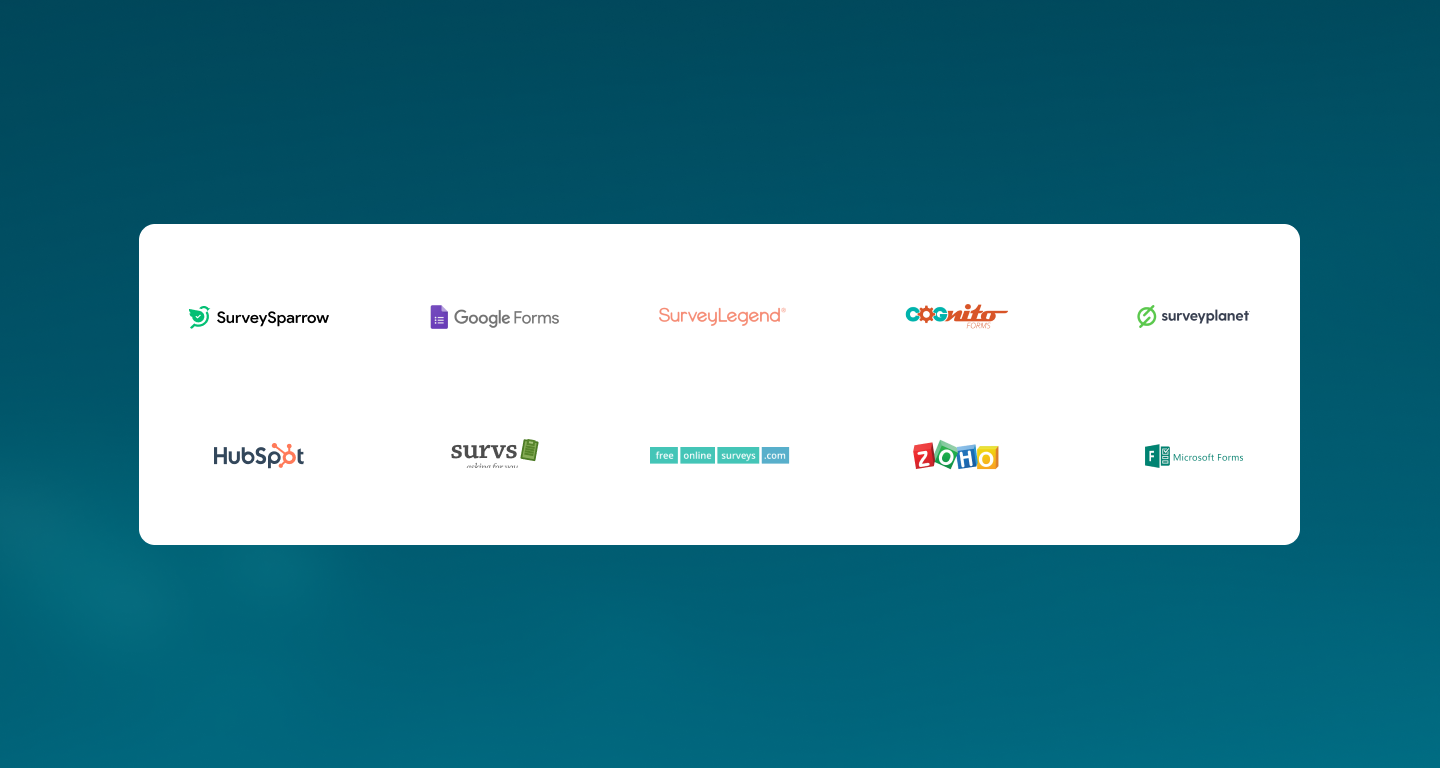Knowledge
Volunteer Sampling: What, Why, When, and How
Article written by Kate Williams
Content Marketer at SurveySparrow
10 min read
23 September 2024

Volunteer sampling is an approach where participants willingly contribute their thoughts and experiences. It’s like a conversation because only those who are interested in taking part will join. These volunteers eagerly contribute their ideas, perspectives, and stories, adding color to the research.
In this blog, we will delve deeper into its meaning, benefits, limitations, and all that you need to know. Whether you are a research guru or a novice in the field, we have something for everyone.
Here are some jump links you can use to get your desired sections.
- What is volunteer sampling?
- Volunteer sampling examples
- Volunteer sampling use cases
- When to use volunteer sampling
- Volunteer sampling features
- How to do volunteer sampling
- Limitations of volunteer sampling
Let's start with understanding what it is.
What Is Volunteer Sampling?
Volunteer sampling is a widely used non-probability sampling technique. But what sets it apart?
Here, participants themselves come up to be a part of the research. Instead of randomly selecting participants, researchers invite individuals who willingly volunteer to participate in the study.
It ensures that only those who are interested in the topic come to the forefront. It provides you with valuable data through methods like online surveys, interviews, or questionnaires.
Volunteer Sampling Examples
To help you understand how this sampling works, let's discuss a couple of example scenarios.
Example 1
Suppose you are doing an environmental survey.
Imagine researchers want to know what people think about protecting the environment. They create an online survey and share the link on social media.
Anyone who sees the link can choose to fill out the survey. Only those who care about environmental issues will likely respond. Therefore, the results will reflect the opinions of engaged individuals, but not necessarily everyone in the population.
Example 2
Now, consider a company trying out its new product in a focus group.
When a company wants feedback on a new product, they might invite people to join a focus group discussion. They advertise for volunteers who are interested in trying out the product and sharing their thoughts.
The participants are usually those who already have some interest in the product. This can provide useful feedback but may not include views from people who are indifferent or unaware of it.

Ready to Collect Meaningful Feedback? Try SurveySparrow for Free!
A personalized walkthrough by our experts. No strings attached!
Use Cases Volunteer Sampling Method
Volunteer sampling is a good choice in certain situations. Here are some times when it works best.

1. Online Surveys and Platforms
The internet is a great place to find volunteers for surveys. Online platforms and social media serve as interaction hubs! Surveys and discussions attract interested participants. You get valuable data on online behaviors and trends from this.
Why It Helps?
By sharing surveys on social media or websites, you can reach people who are really interested in the subject and want to share their opinions.
If you are in the look for survey tools, then look no further than SurveySparrow. It's one of the best online survey tools offering AI surveys with its free version.
With its AI feature you can create an entire survey from scratch within seconds. Interested in trying it out? use the following form to sign up for free!!!
A personalized walkthrough by our experts. No strings attached!
2. Exploring New Topics
You can use volunteer sampling when you are looking into a new area of research.
Why It Helps?
It allows you to gather ideas and opinions from people who are interested in the topic, which can help you understand it better.
3. Pilot Studies and Feasibility Assessments
Before launching large-scale research projects, researchers often conduct pilot studies or feasibility assessments. It helps researchers test their surveys, questionnaires, or interview protocols on a smaller scale.
Why It Helps?
Volunteer sampling can help you see if your surveys or interviews make sense and if they work well with real people.
4. Community Engagement and Grassroots Initiatives
If you want to learn about local issues or needs, volunteer sampling is useful.
Why It Helps?
Volunteer sampling connects researchers with local communities. It lets community members share their thoughts and feelings about programs or services that affect them.
5. Studying Specific Groups
When researching a small or special group of people, use volunteer sampling. Researchers target enthusiasts or professionals.
Why It Helps?
You can get detailed information from people who have direct experience with the topic you are studying.
When to Use Volunteer Sampling?
Researchers opt for volunteer sampling in specific scenarios, such as the following.

1. Primary Research
One of the best times to use volunteer sampling is when you explore unfamiliar topics i.e, primary research. Since you don't know much about the topic, volunteers can provide firsthand insights. This coudl help shape the direction of further studies.
For example, in a study about a new social trend, volunteers might offer valuable perspectives that guide the next steps of research.
Key Benefits:
- Helps researchers identify key patterns or trends early on.
- Provides flexibility for adjusting the research focus based on volunteer input.
2. Limited Resources
Another time to consider volunteer sampling is when you have limited resources. It's possible that researchers have limited budgets to work with. Therefore, gathering large amounts of data can be hard. Volunteers can be found through low-cost methods like online surveys. This way, researchers can collect data without spending too much on recruitment.
Key Benefits:
- Reduces the cost of recruiting participants. Saves time by avoiding complicated sampling methods.
- Easy access to volunteers through platforms like social media.
3. Specific Target Audience
In some studies, researchers need to reach people with specific experiences or in other target audience.
For example, volunteer sampling can be really helpful when doing a study on topics like rare medical conditions. The sampling method makes the process easy by finding individuals who match the study's needs.
Volunteers are often eager to participate because they have a personal connection to the research topic.
Key Benefits:
- Connects researchers with participants who have relevant expertise or experiences.
- Helps reach groups that may be hard to access through other methods.
- Engaged volunteers often provide more detailed and meaningful responses.

Ready to Collect Meaningful Feedback? Try SurveySparrow for Free!
A personalized walkthrough by our experts. No strings attached!
Features of Volunteer Sampling
Now, let’s get technical and look at the key elements.

1. Willing Participation
First lies the willingness of participants to actively engage in the research process. Participants choose to take part because they are interested. There is no force here. They willingly share their thoughts and experiences.
2. Accessibility and Convenience
It’s simple to connect with people for volunteer sampling. You can contact them online, on social media, or at events. This makes gathering information quick and straightforward.
3. Diverse Perspectives
Volunteer sampling attracts a variety of individuals. They come from various backgrounds and ages, providing diverse opinions. This diversity helps researchers get a well-rounded view of the topic they’re studying.
4. Cost-Effectiveness
Compared to some other methods, volunteer sampling is budget-friendly. It allows researchers to collect information without spending much money, which is excellent for studies with limited funds.
5. Quick Data Collection and Analysis
Getting responses from volunteers is fast. Researchers can gather information swiftly, allowing them to analyze the data and draw conclusions promptly.
6. Engaged and Open Participants
Volunteers are open and honest in their responses. Because they want to participate, they share their thoughts openly, providing valuable and genuine insights.
How to Conduct Volunteer Sampling?
Though conducting a survey requires planning and specific strategies, it is not as complex as it might seem. (Given that you have a simplified process to guide you)
Don’t worry! Our team has tried to come up with an easy-to-do eight-step guide. Take a look.

1. Know Your Goals
Clarity is paramount! Be clear about what you want to learn. Define your research objectives so you can focus on finding the correct information.
2. Find the Right People
Identify the specific group you’re interested in. Understand their characteristics and interests. Also, know where they usually hang out, like online communities or social media platforms.
Related Read: Calculate your sample size using slovin's formula.
3. Choose the Right Platforms
Pick places where your target group is active. It could be social media, online forums, or local gatherings. Make sure it’s a space where your audience feels comfortable.
4. Make an Appealing Invitation
Create an inviting message explaining your research. Ensure you clearly state why it’s essential and how participants will benefit. Use friendly language to encourage people to join voluntarily.
5. Use Online Tools
Take advantage of the best online survey tools, such as SurveySparrow, to create easy-to-understand surveys. These tools simplify the process for both you and the participants.

6. Respect Ethical Rules
Always follow ethical guidelines. First, get participants’ permission to participate. Second, explain how their information will be used and kept confidential.
7. Analyze Your Data
Once you collect the data, analyze it carefully. Look for patterns and trends in the responses to understand what people are saying.
8. Share Your Findings
Finally, draw conclusions about your research based on your analysis. Be clear about what you learned and share it responsibly. This must include any limitations you discovered during the study.
Limitations of Volunteer Sampling: Challenges to Consider

1. Sampling Bias
Now, when the participants are random, it is likely that they will have unique traits and characteristics. This can lead to biased results that don’t represent the entire population accurately. Hence, sampling bias.
2. Limited Generalizability
Findings from volunteers might not apply to broader groups. This not only limits the study’s overall applicability but can also indirectly affect its credibility.
3. Response Bias
Participants might give answers they think researchers expect. There is a high possibility of skewing the data with social desirability bias.
Related Read: What is response bias?
4. Difficulty in Reaching Specific Groups
Not everyone will be equally interested in participating. Certain groups might not volunteer, making it hard to gather insights from those specific communities or demographics.
5. Not Suitable for Causation
Volunteer sampling can’t establish cause-and-effect relationships due to its non-random nature. This will also limit the depth of conclusions that can be drawn.
Wrap Up!
Well, voluntary sampling reminds us that every voice matters. It is a way of gaining a more prosperous and inclusive understanding of the world. Its simplicity, cost-effectiveness, and swift data collection make it a valuable tool. Though there are a few inherent limitations, it helps you reach hose corners that were once hard to access.
And before you go, do not forget to give SurveySparrow a try.
A personalized walkthrough by our experts. No strings attached!
Start 14 Days free trial

Kate Williams
Related Articles

Customer Experience
8 Examples of Good Customer Service Experience To Elevate Business
8 MINUTES
20 June 2023

General
5 Types of Feedback and How to Use Them in a Workplace
9 MINUTES
24 April 2023

Business
50+ Questions to Ask a Prospective Business Partner [Free Template]
9 MINUTES
26 February 2024

Best Of
Top 10 Pollfish Alternatives To Use In 2024
15 MINUTES
28 July 2021
